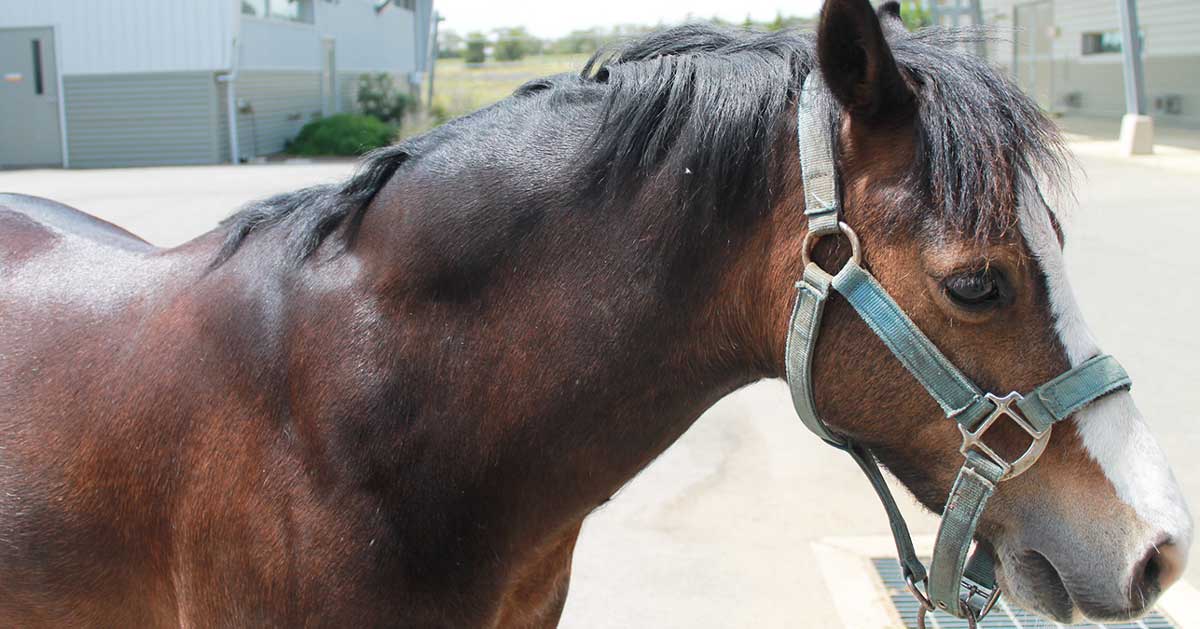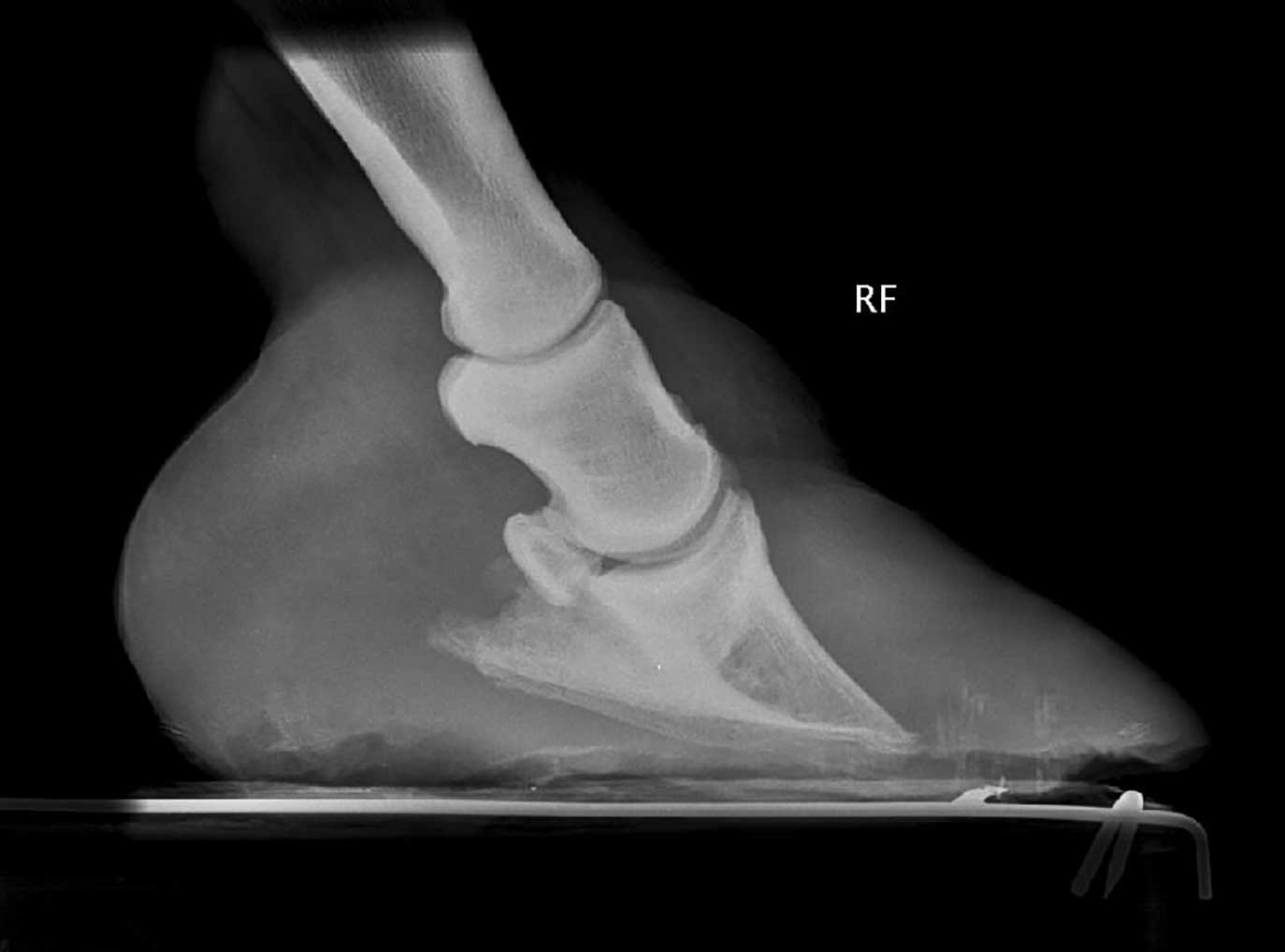2 Mar 2021
An increasingly worrying problem in equids, as in other animals, obesity and the accompanying laminitis it causes are probed by the author, who delves into management options.

The growth in equine obesity parallels the increase in obesity in other species and presents a significant threat the equine welfare in the UK.

Obesity-related laminitis is frequently referenced as the greatest threat to equine welfare in the UK.
Anecdotally, the prevalence of obesity and accompanying laminitis have increased in parallel with the rising domestication and cosseting of our equids – the majority of which are now kept as companions rather than elite athletes or beasts of burden. Surveillance data would suggest at least 50% of UK horses are overweight or obese. The increasing prevalence of obesity has paralleled rises in obesity in other domestic species and, indeed, our own species, as we live in an increasingly obesogenic environment.
With greater understanding of endocrinopathic laminitis has come a welcome shift of emphasis away from dispensing NSAIDs and foam pads once laminitis has developed towards identifying and treating the adiposity and insulin dysregulation that drive the laminar damage. Research focus has also moved away from trying to understand and modify the changes that are occurring in the feet towards understanding and modifying the metabolic derangements that occur with obesity.
Our understanding of what is going on within the laminae remains relatively limited, and therapeutics that would effectively modify the laminar pathology remain elusive. However, understanding of equine metabolic syndrome has improved and this will provide insight into options for therapeutic intervention both now and into the future.
Studies demonstrating that laminitis can be induced by protracted increases in insulin concentration1,2 were pivotal in helping us understand hyperinsulinaemia is central to the development of laminitis. These have been followed by work in field cases demonstrating the pathological changes that occur in both equine metabolic syndrome and pituitary pars intermedia dysfunction (PPID) are consistent with those occurring in laminitis that is induced experimentally with hyperinsulinaemia3,4.
Dietary management and increased exercise (where appropriate) should be the focus of efforts to improve tissue sensitivity to insulin, and hence reduce the risk of laminitis, with pharmaceuticals only being a secondary consideration. It should, in theory, be straightforward to manage the weight of our domestic animals by manipulating their dietary intake; however, this overlooks the complex behavioural and psychological factors that influence the relationships we have with our pets. Therefore, strategies are often required that can accommodate some of the barriers that cannot be broken down, and would otherwise prevent weight loss and reduction in laminitis risk.
Pharmaceuticals will only ever be an adjunct to the management of obesity and laminitis, but when used selectively and appropriately they can help in reducing adiposity, improving insulin responses and they may even help in overcoming some of the barriers to human behaviour change. A precedent can be seen in human medicine, where outcomes in managing obesity can be improved with the use of pharmaceuticals. This article considers some of the pharmaceutical treatments that can be used in managing obesity and reducing laminitis risk.

Metformin became a popular treatment for horses with recurrent “pasture-associated” laminitis in the absence of other alternatives in the UK5. Its popularity has waned with the availability of a suitable levothyroxine formulation and with a growing perception that it does little to reduce the risk of laminitis. Evidence generated to date suggests metformin acts at an intestinal level, inhibiting the absorption of monosaccharides, and in doing so reduces the subsequent secretion of insulin from the pancreas.
In an experimental investigation, metformin significantly reduced circulating concentrations of glucose and insulin following the administration of a bolus of dextrose by nasogastric tube6.
While these results support the potential for metformin to be of benefit, the circumstances in which the study was performed bear little resemblance to clinical practice, where horses with equine metabolic syndrome would (hopefully) be on a diet low in non-structural carbohydrates. Furthermore, the effects of metformin are only likely to last for a few hours following administration.
Whether metformin makes a clinically relevant difference to insulin concentration or laminitis risk in the field has not been adequately determined. No evidence is available to suggest that metformin helps with reduction in adiposity7. Metformin is sometimes used around periods when laminitis risk is perceived to be high; however, this is a dangerous strategy when the magnitude of its effect is unknown.
Avoiding or reducing exposure to risk factors would be a more prudent alternative. If metformin is being used, it is generally administered at 15mg/kg to 30mg/kg, two to four times per day. It is likely to be more effective if it can be administered more frequently. In humans, metformin demonstrates saturable kinetics and beyond a certain point increases in dose have no beneficial effect. Unfortunately, that point is not known in horses. It has also been suggested not all humans have the appropriate drug transporters to be able to absorb metformin, and absorption may be similarly variable in horses.
Until recently, levothyroxine was little used in the UK; however, with the availability of a suitable formulation for horses, it has rapidly become a popular treatment for obese horses that are refractory to weight loss. Supportive data in horses with equine metabolic syndrome is lacking. However, evidence is available that the administration of levothyroxine to obese horses with a history of laminitis results in both weight loss and improvements in insulin sensitivity compared to controls7.
In healthy horses, levothyroxine administration is associated with a reduction in insulin concentrations, a doubling of insulin sensitivity, an increase in insulin disposal rate, a decreased insulin response to glucose and an increase in insulin receptors on adipocytes; concentrations of triglycerides, cholesterol and low density lipoproteins also decrease8,9, and similar changes occur in humans and other species.
The effects on insulin dynamics, coupled with the promotion of weight loss, make levothyroxine a compelling treatment option for obese horses suffering from, or deemed to be at risk of, laminitis. In the US, where levothyroxine has been widely available at a more reasonable cost, the drug has been very popular – too popular – for many years, and has been used widely in the management of obesity (and other vague medical maladies when it was often not indicated). This use gives us the benefit of that collective experience, and anecdotally levothyroxine has been a very helpful treatment in the management of equine metabolic syndrome (Nick Frank, personal communication).
In the UK, an increasing tendency to use levothyroxine in the treatment of acute laminitis, rather than as it has more traditionally been used as a treatment for obesity, has been seen. This is logical, considering the drug’s effects on insulin dynamics, which is also evident in association with systemic inflammatory response syndrome10 that can also result in laminitis.
Evidence to support the use of levothyroxine in acute laminitis is lacking. In obese patients with laminitis, potential exists for the dual benefit of hastening the initial response to laminitis while also promoting loss of adipose tissue.
Understandably, some will have reticence to administer exogenous thyroxine and, in effect, superimposing one endocrinopathy on another. Concerns have been expressed about the effects exogenous levothyroxine may have on endogenous thyroxine production, and also on behaviour. However, a number of investigations have now demonstrated levothyroxine is safe and well tolerated when used at clinical doses for up to 48 weeks, and when used at doses that would exceed the doses used clinically9,11.
Bertin and colleagues recently demonstrated that, at 10 times the normal clinical dose with circulating thyroxine concentrations increasing to 15 times normal, no adverse effects were seen on behaviour, endogenous thyroid function or other health parameters12.
The only finding of note in these studies has been increased responsiveness after two weeks of treatment. While it has been suggested levothyroxine may increase activity and induce anxiety in treated horses, this does not appear to be an issue in practice. Levothyroxine is typically used at 0.1mg/kg by mouth once daily; however, anecdotally lower doses may be effective (Knowles, personal communication).
Historically, three to six months of treatment has been recommended, but this is an arbitrary figure. While this guide is reasonable, the drug should be used while it is proving effective and until target weight is reached, at which time the dose should be gradually reduced over a few weeks. Where finances do not permit three to six months of treatment, shorter courses can be helpful in promoting weight loss and in encouraging owners that it is possible to effectively reduce the weight of their horses.
The author tends to treat for one month at a time, reassessing the clinical response before prescribing a further month of treatment. Monitoring of body condition is important, as responses are variable and some horses will lose weight rapidly; others may not lose weight if no compliance with management recommendations is noted.
Sodium-glucose-linked cotransport-2 (SGLT2) inhibitors have become a popular treatment for human type-2 diabetes mellitus, and are under investigation as a novel therapy in horses. Work performed to date indicates that through inhibiting re-uptake of glucose in the kidney and thereby promoting its excretion, insulin concentrations are lowered and laminitis risk reduced13,14.
Further work is required to determine whether SGLT2 inhibitors will make a clinical difference in field conditions. It is probable they may help in reducing insulin concentrations and laminitis risk in the short term, but it seems less likely they will reduce adiposity and improve insulin dynamics in the long term.
Velagliflozin is likely to be registered for use in horses in the near future; the use of the human drug canagliflozin has also been reported in horses (Nick Frank, personal communication).
Pergolide is not used directly as a treatment for obesity or laminitis, but is the primary treatment for PPID. It had been suggested pergolide might improve insulin sensitivity and, therefore, reduce the risk of laminitis in addition to having other benefits in horses with PPID15.
However, recent evidence indicates that dopamine agonists do not improve insulin dynamics16, and no evidence shows pergolide reduces the risk of laminitis in horses with PPID17. PPID and obesity are common comorbidities, and how (or, indeed, whether) PPID contributes to insulin dysregulation and laminitis risk is not known.
A recent study indicated insulin dysregulation may often be refractory to treatment in horses with PPID, even when they are treated with pergolide (McGowan and Hertzel, unpublished data). Pergolide has many other benefits, but should not be regarded as a drug that reduces the risk of laminitis based on current knowledge; in horses with PPID that are considered at risk of laminitis, the focus should be on controlling obesity and hyperinsulinaemia.
Numerous nutraceuticals have been proposed to be of benefit in the management of obesity. Some evidence suggests chromium and magnesium may modulate insulin signalling; however, 16 weeks of treatment in horses was not found to be of benefit18. Short-chain fructo-oligosaccharides have been found to improve insulin dynamics in Arab mares that were being fed ad-libitum19, but they did not improve outcomes compared to a control group that had its diet restricted without the addition of short-chain fructo-oligosaccharides20.
Cinnamon has been shown to potentiate the effects of insulin, but has not been investigated in horses to the author’s knowledge. L-carnitine promotes the oxidation of fatty acids and has some supportive evidence in humans, but as far as the author is aware it has not been investigated in horses.

Diet and exercise will always be the mainstay of effective management of obesity and prevention of laminitis. Drugs such as metformin and SGLT2 inhibitors will reduce insulin concentrations in the short term around periods of laminitis risk. However, their potential benefits in the chronic management of obesity and laminitis are less clear.
Levothyroxine is an effective means of promoting weight loss and reducing insulin concentrations, and is being used increasingly widely in the UK with good results, having been used in the US for many years. No compelling evidence supports any of the nutraceutical options. Pharmaceuticals should not be used without due consideration, not least because none of the treatments for obesity or insulin dysregulation are registered for use in horses, but when used appropriately they have the potential to significantly improve welfare through the prevention and more rapid resolution of laminitis.